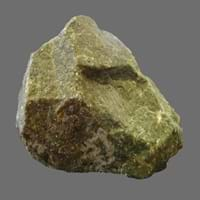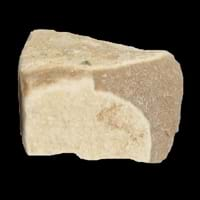Definition
Dunite is a green to brownish coarse-grained igneous rock mainly consisting of olivine
Mudstone is a fine-grained, dark gray sedimentary rock, which is formed from silt and clay and is similar to shale but has less laminations
Origin
New Zealand
Unknown
Discoverer
Ferdinand von Hochstetter
Unknown
Etymology
From the name of Dun Mountain, New Zealand, + -ite1
From the English mud and stone, from low German mudde and stainaz
Class
Igneous Rocks
Sedimentary Rocks
Sub-Class
Durable Rock, Medium Hardness Rock
Durable Rock, Soft Rock
Group
Plutonic
Not Applicable
Other Categories
Coarse Grained Rock, Opaque Rock
Fine Grained Rock, Opaque Rock
Texture
Phaneritic
Clastic
Color
Dark Greenish - Grey
Black, Blue, Brown, Green, Grey, Orange, Red, White, Yellow
Durability
Durable
Durable
Appearance
Rough and Shiny
Rough and Dull
Interior Uses
Decorative Aggregates, Interior Decoration
Decorative Aggregates, Entryways, Floor Tiles, Interior Decoration
Exterior Uses
As Building Stone, As Facing Stone, Garden Decoration, Paving Stone
As Building Stone, As Facing Stone, Paving Stone, Roof Tiles
Other Architectural Uses
Curbing
Curbing
Construction Industry
As Dimension Stone, Cement Manufacture, Construction Aggregate, for Road Aggregate, Making natural cement, Raw material for the manufacture of mortar
Cement Manufacture, Construction Aggregate, for Road Aggregate, Making natural cement, Raw material for the manufacture of mortar
Medical Industry
Not Yet Used
Not Yet Used
Antiquity Uses
Artifacts, Monuments, Sculpture, Small Figurines
Sculpture, Small Figurines
Commercial Uses
Creating Artwork, Gemstone, Jewelry, Source of Chromite, Platinum, Nickel and Garnet, Source of Diamonds
Creating Artwork, Pottery
Types
Not Available
Marl, Shale and Argillite
Features
Constitutes upper part of the Earth's mantle, Generally rough to touch, Host rock for Diamond, Is one of the oldest rock
Available in Lots of Colors and Patterns, Smooth to touch, Very fine grained rock
Archaeological Significance
Monuments
Used
Not Yet Used
Famous Monuments
Data Not Available
Not Applicable
Famous Sculptures
Data Not Available
Data Not Available
Formation
Dunite is a plutonic ultramafic igneous rock consisting almost m olivine. It can be formed in two ways.
Mudstone forms when very fine-grained clay particles are deposited in water which settle at the bottom of water bodies. They are buried and compacted by overlying sediment hence forming mudstone.
Mineral Content
Amphibole, Chromite, Garnet, Magnesium, Olivine, Phlogopite, Plagioclase, Pyroxene
Biotite, Chlorite, Feldspar, Micas, Muscovite or Illite, Plagioclase, Pyrite, Quartz
Compound Content
Ca, CaO, Fe, Potassium, Silicon Dioxide, Sodium, Titanium Dioxide
Aluminium Oxide, NaCl, CaO, Iron(III) Oxide, Silicon Dioxide
Types of Metamorphism
Burial Metamorphism, Cataclastic Metamorphism, Contact Metamorphism
Not Applicable
Types of Weathering
Biological Weathering, Chemical Weathering, Mechanical Weathering
Chemical Weathering, Mechanical Weathering
Types of Erosion
Coastal Erosion, Glacier Erosion, Water Erosion
Chemical Erosion, Sea Erosion
Grain Size
Coarse Grained
Very fine-grained
Fracture
Irregular
Not Available
Porosity
Less Porous
Highly Porous
Compressive Strength
Not Available
Cleavage
Imperfect
Perfect
Specific Gravity
3-3.01
2.2-2.8
Transparency
Translucent to Opaque
Opaque
Density
2.84-2.85 g/cm3
2.4-2.8 g/cm3
Resistance
Heat Resistant, Pressure Resistant, Wear Resistant
Heat Resistant, Impact Resistant
Deposits in Eastern Continents
Asia
China, India, Indonesia, Kazakhstan, Russia, South Korea, Thailand, Turkey
Bangladesh, China, India, Russia
Africa
Morocco, South Africa
Ethiopia, Kenya, Morocco, South Africa, Tanzania
Europe
Finland, France, Georgia, Germany, Great Britain, Italy, Kazakhstan, Netherlands, Norway, Spain, Switzerland, Venezuela
Austria, France, Germany, Greece, Italy, Romania, Scotland, Spain, Switzerland
Others
Not Yet Found
Not Yet Found
Deposits in Western Continents
North America
Canada, USA
USA
South America
Argentina, Brazil, Colombia, Ecuador, Venezuela
Bolivia, Chile, Colombia, Ecuador, Peru, Venezuela
Deposits in Oceania Continent
Australia
New Zealand, Western Australia
New South Wales, New Zealand, Queensland, Victoria, Western Australia










